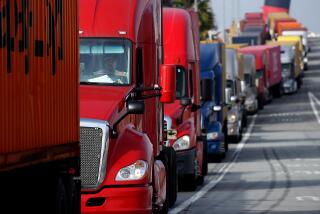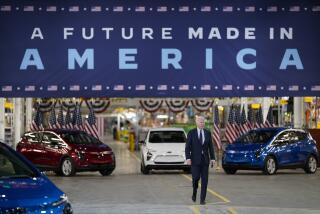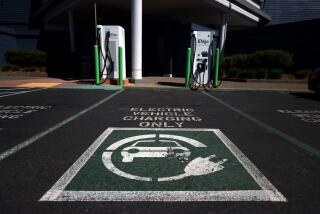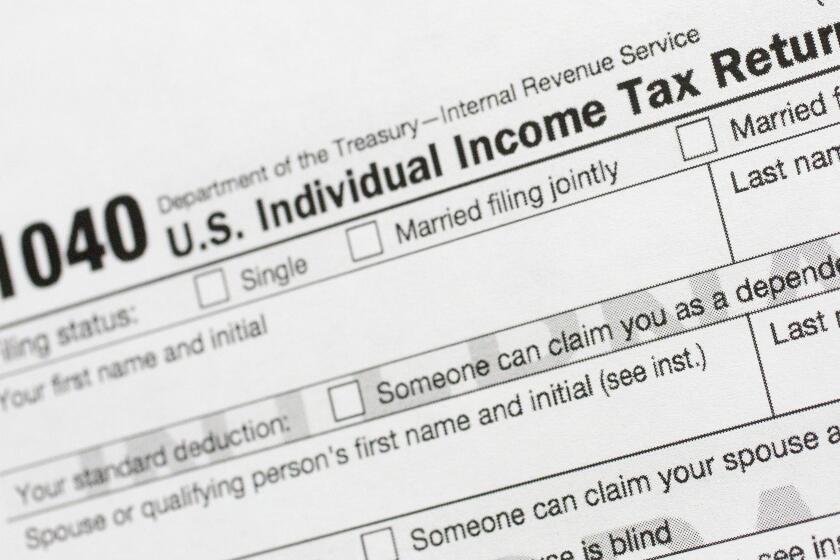U.S. could cut vehicles’ fossil fuel use, emissions by 80% by 2050
A new National Research Council report says the U.S. may be able to reduce fossil fuel consumption and greenhouse gas emissions by 80% by 2050 in light-duty cars and trucks.
The highly ambitious goal could be reached, the report says, through a combination of more efficient vehicles and the use of gasoline and diesel alternatives such as bio-fuels, electricity and hydrogen.
“To reach the 2050 goals for reducing petroleum use and greenhouse gases, vehicles must become dramatically more efficient, regardless of how they are powered,” said Douglas M. Chapin, principal of MPR Associates and chairman of the committee that wrote the report.
For reasons both good and bad, the U.S. has already seen a reduction in oil consumption. In November 2005, for example, U.S. oil consumption peaked at more than 20.8-million barrels a day, according to Energy Department statistics.
The global recession, a fairly tepid economic recovery, a reduction in vehicle miles traveled and increasingly better-mileage cars, trucks and SUVs have all combined to reduce consumption to slightly more than 18.9-million barrels a day, the Energy Department said.
But the Research Council is discussing a reduction on an entirely more dramatic scale.
It’s the kind of scale that would require the rough equivalent of taking President Obama’s goal of 54.5 miles per gallon for the U.S. vehicle fleet by 2025 and then doing the same increase again, and again.
“This was an if/then proposition,” Chapin said in an interview. “If one sets out to achieve these goals, what would have to be done? We think it’s possible, but it is going to demand a lot. We are not predicting that this is going to be the future.”
The Research Council said that part of the solution would be improvements on several good starts, such as the Toyota Prius hybrid; plug-in hybrid electric vehicles such as the Chevrolet Volt; and battery-powered electric vehicles such as the Nissan Leaf.
Also required would be advancements in technologies such as those used in hydrogen fuel-cell electric vehicles, like the Mercedes F-Cell, scheduled to be introduced about 2014; and in compressed natural gas vehicles, such as the Honda Civic CNG.
“It is impossible to know which technologies will ultimately succeed,” the report says, “because all involve uncertainty. The best approach, therefore, is to promote a portfolio of vehicle and fuel research and development, supported by both government and industry, designed to solve the critical challenges in each major candidate technology.”
This will require dramatic improvement on at least two fronts.
In the federal Energy Independence and Security Act of 2007, for example, the nation was given the lofty production target of 500-million gallons of so-called cellulosic bio-fuels in 2012.
Cellulosic involves advancements in bio-fuel that comes from garbage, biomass like wood waste, sugar cane bagasse (waste residue from sugar cane processing), and other items that are considered superior to common corn-based ethanol.
“Several companies combined to produce about 20,000 gallons of fuels using cellulosic biomass” in 2012, according to a report from the Energy Department’s Energy Information Administration (EIA).
That’s just 0.004% of the goal. Using another standard of measurement, the EIA says that 476 barrels of cellulosic bio-fuels were produced in the U.S. last year, or about 1.3 barrels a day.
Another area needing improvement is auto mileage.
The Environmental Protection Agency says that model year 2012 cars and trucks will have the highest ever real-world average fuel economy at about 23.8 miles per gallon.
That would be 1.2 mpg higher than the previous peak set in 2010. In 2011, when U.S. gasoline prices averaged a then-record $3.53 for a gallon of regular, the mpg numbers fell.
Some critics said U.S. automakers were the cause of the decline in mileage in 2011, which was blamed in part on the effects of the March 2011 earthquake, tsunami and nuclear power disasters in Japan.
The disasters reduced production by Honda and Toyota, leaving car buyers with fewer options for gas-saving models that year.
“Because American carmakers weren’t doing their share, when natural disaster curtailed Japan’s auto production, our overall fuel efficiency faltered,” said Dan Becker, director of the Safe Climate Campaign at the Center for Auto Safety.
“This is a stark demonstration that despite GM’s and Chrysler’s claims, they still are not pulling their weight,” Becker said.
ALSO:
Feds probe fuel leaks in 250,000 E-Class cars
California insurance premiums are among the most expensive in U.S.
More to Read
Inside the business of entertainment
The Wide Shot brings you news, analysis and insights on everything from streaming wars to production — and what it all means for the future.
You may occasionally receive promotional content from the Los Angeles Times.











